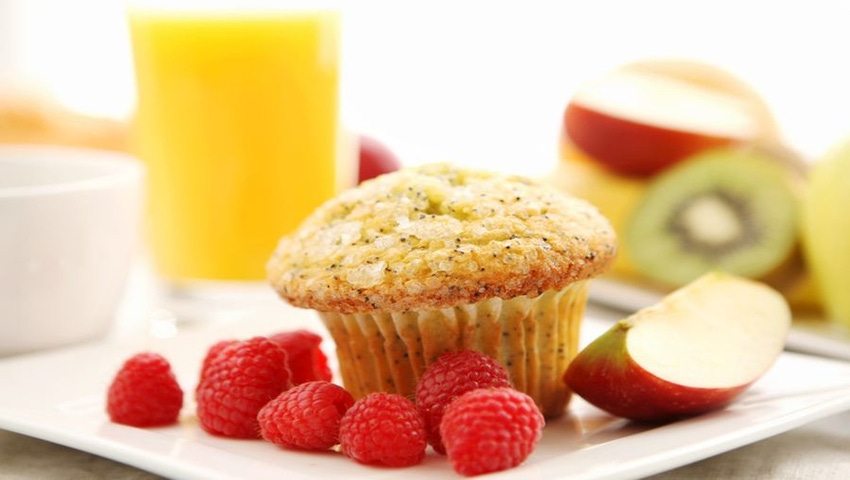The clean-label movement is translating into changes across the entire supplier spectrum, from applying familiar ingredients in new ways, to utilizing ingredient manufacturing byproducts to create new offerings, to developing new manufacturing techniques that either help create natural alternatives to artificial ingredients or greatly enhance overall product health benefits.

It’s pretty apparent that clean label is no longer a trend; rather, it has become a driving force behind the way companies are thinking about new and existing products. According to Innova Market Insights, 25 percent of new products in the United States had clean-label positioning in 2015, up from 17 percent in 2014.
Non-GMO (genetically modified organism), gluten-free, organic and whole food nutrition labeling, along with the absence of natural colors, sweeteners and preservatives, are leading the clean-label movement. Innovation is occurring at every level—from ingredient development and manufacturing techniques through to packaging and website considerations. So what are savvy food, beverage and supplement companies doing to be at the forefront of the clean-label movement?
Innovating at the Ingredient Level
This movement is translating into changes across the entire supplier spectrum, from applying familiar ingredients in new ways, to utilizing ingredient manufacturing byproducts to create new offerings, to developing new manufacturing techniques that either help create natural alternatives to artificial ingredients or greatly enhance overall product health benefits.
Many of today’s clean-label ingredients were once considered “food waste." As concern surrounding food waste and customer demand for eco-friendly ingredients grows, suppliers are realizing once discarded plant parts have viable, nutritive properties that can be capitalized upon.
Additionally, new processing technologies have facilitated clean-label innovation. Today, the industry offers natural blue and green colorant alternatives plus enzymes, while other plant extracts are being used as shelf-life extenders and stabilizers.
One of the most significant recent developments in processing is high-pressure pasteurization, which utilizes ultra-high pressure to destroy pathogens without the application of heat that can damage taste, texture and lessen the nutrient profile of foods and beverages.
High-pressure pasteurization completely reinvigorated the packaged juice category and created demand for premium cold-pressed offerings considered by customers to have superior freshness and nutritional value, including such rapidly growing brands as Suja and Bolthouse. High-pressure pasteurization is also now being utilized in the coffee market and will likely spur some interesting new product offerings.
Beyond the Facts Panels
Over the last several years, the industry has seen a rise in the number of products touting what’s NOT in their list of ingredients. Gluten-free, nut-free, dairy-free, vegan, non-GMO, kosher and Halal designations are pervasive throughout the industry. According to Packaged Facts, sales of non-GMO food and beverage products will reach US$800 billion worldwide by 2017, at which time non-GMO products will comprise 14.5 percent of total food and beverage sales worldwide. The accelerated rate at which Non-GMO Project verified designation is being sought after is staggering.
Savvy companies are now looking to talk not only about what’s NOT in their products, but also what IS in their products. Canadian-based Vega has taken the facts panel for its Vega One Nutritional Shake and created a series of icons to help its customers understand what those ingredients mean in terms of food equivalencies. For example, 1 serving of Vega One has the protein value of 2.7 eggs or the omega-3 value of 2.3 servings of salmon. It is a simple way for customers to understand what is in their Vega One shake and what that means for their overall health goals. By the way, this is a very millennial-friendly approach.
RX Bar in Chicago recently revamped its packaging to be even more upfront about what’s in its bars and moved the list of ingredients to the front panel. The company goes a step further, stating just how much of each ingredient is used, i.e. 3 egg whites, 6 almonds, 3 cashews and 2 dates. And by listing its bars’ ingredients on the front panel ... that is made pretty clear.
Another recent clean-label nutrition bar entry is That’s It. The bars tout their minimal ingredient deck and challenge consumers to find a cleaner bar. And they are now carried nationwide in Starbucks.
Pushing for More Product Transparency
Not only are consumers demanding their products contain natural, minimally processed ingredients, they are demanding transparency about where those ingredients come from. Companies like Smith Tea in Portland, Oregon, have taken this request for transparency to heart. Although the company has already long been known for using the best ingredients available, it now has a feature on its website where customers can enter a batch number found on the bottom of their carton of tea and look up the origin and harvest dates for every ingredient in the package. Even Starbucks launched a line of single-origin coffee beans for customers who are concerned about the origin of their morning cup of joe.
Clean Label Is the New Industry Standard
The strongest area for growth for clean-label products is in the food and beverage sector. Beverages especially are at the forefront of this movement because they utilize more artificial sweeteners and colors and there are solid, natural alternatives available for developers. Clean-label supplements continue to be more challenging, as some of the natural ingredient alternatives require larger doses to be efficacious.
More than ever before, consumers, bloggers and activists are demanding their foods, beverages and supplements be formulated and produced using ingredients and source materials they know and trust. And their voice is strong and growing.
Looking to get in on the clean label trend? Understanding consumer demands, formulation considerations and supply chain considerations is critical. Join us for the Delivering on the Clean-Label Expectation all-day summit on Wednesday, Oct. 5, at SupplySide West 2016.
Jeff Hilton is partner and co-founder of BrandHive, a prominent healthy-lifestyle marketing and branding agency celebrating 20 years working with dietary supplement, functional food and beverage, and health and beauty brands nationally and globally. He brings 35 years of advanced business and marketing insight to his clients, and has been recognized by Advertising Age magazine as one of the nation's Top 100 Marketers. Hilton is also a recipient of Nutrition Business Journal’s (NBJ) Personal Service Award in recognition for his ongoing outreach efforts, including editorial contributions, pro-bono work, webinars and speaking engagements within the healthy lifestyles industry.
About the Author(s)
You May Also Like






.png?width=800&auto=webp&quality=80&disable=upscale)